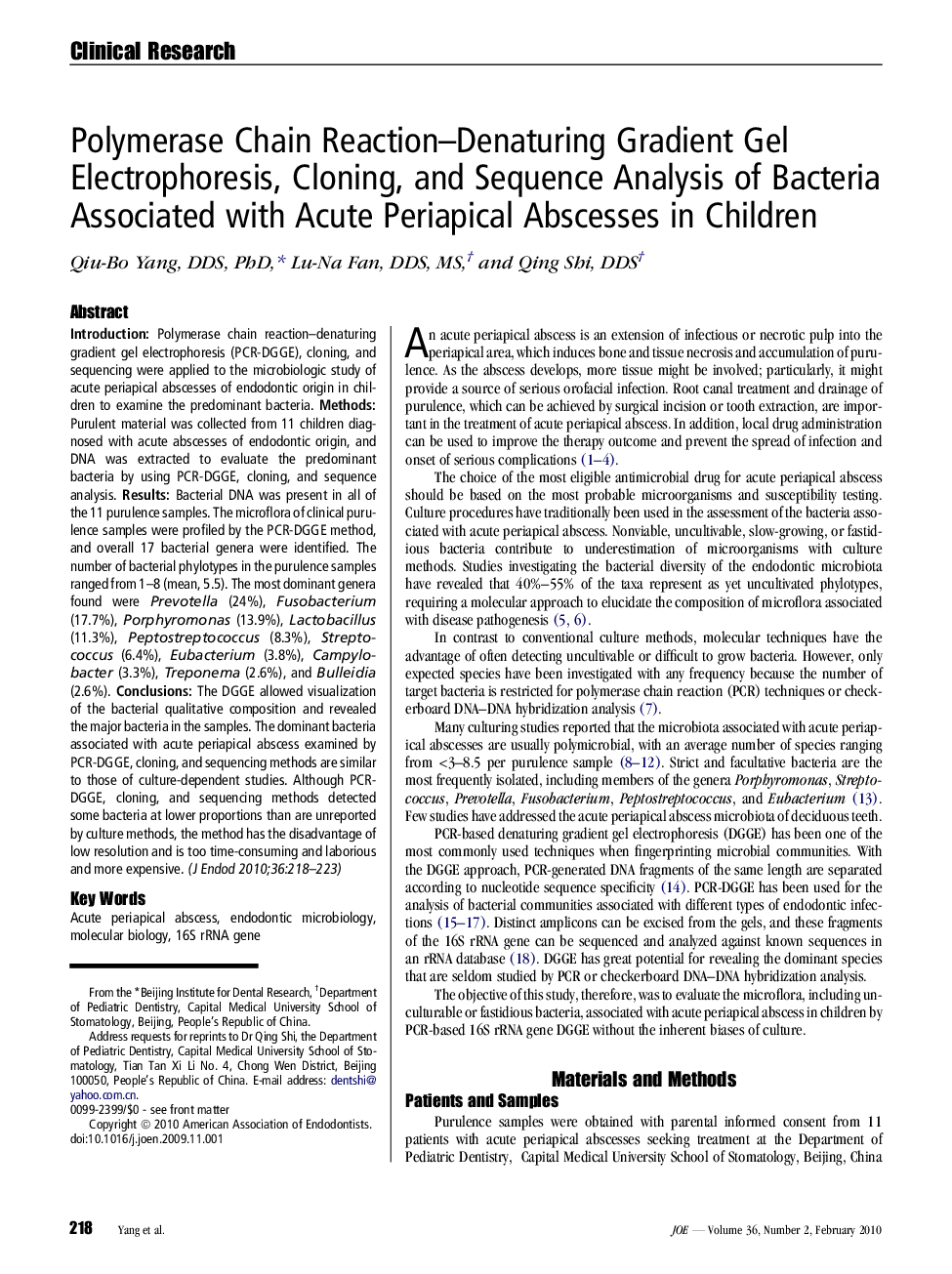| Article ID | Journal | Published Year | Pages | File Type |
|---|---|---|---|---|
| 3149328 | Journal of Endodontics | 2010 | 6 Pages |
IntroductionPolymerase chain reaction–denaturing gradient gel electrophoresis (PCR-DGGE), cloning, and sequencing were applied to the microbiologic study of acute periapical abscesses of endodontic origin in children to examine the predominant bacteria.MethodsPurulent material was collected from 11 children diagnosed with acute abscesses of endodontic origin, and DNA was extracted to evaluate the predominant bacteria by using PCR-DGGE, cloning, and sequence analysis.ResultsBacterial DNA was present in all of the 11 purulence samples. The microflora of clinical purulence samples were profiled by the PCR-DGGE method, and overall 17 bacterial genera were identified. The number of bacterial phylotypes in the purulence samples ranged from 1–8 (mean, 5.5). The most dominant genera found were Prevotella (24%), Fusobacterium (17.7%), Porphyromonas (13.9%), Lactobacillus (11.3%), Peptostreptococcus (8.3%), Streptococcus (6.4%), Eubacterium (3.8%), Campylobacter (3.3%), Treponema (2.6%), and Bulleidia (2.6%).ConclusionsThe DGGE allowed visualization of the bacterial qualitative composition and revealed the major bacteria in the samples. The dominant bacteria associated with acute periapical abscess examined by PCR-DGGE, cloning, and sequencing methods are similar to those of culture-dependent studies. Although PCR-DGGE, cloning, and sequencing methods detected some bacteria at lower proportions than are unreported by culture methods, the method has the disadvantage of low resolution and is too time-consuming and laborious and more expensive.
